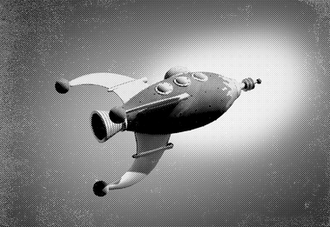STEM Education and 21st Century Learning

PROGRAM COMPONENTS
Elementary Program (1st – 5th Grade)
Students will be exposed to hands on activities that will bring the principles of engineering alive while learning the engineering design process. The engineering design process is a series of steps that engineers use to solve problems. What makes these activities different is that they will provide no "recipe" and no drawings for building the items. The emphasis is on the students understanding that engineers must "imagine and plan" before they begin to build and experiment. Therefore, students must formulate their ideas and draw up their plans before constructing their project. The goal will be to teach our Scholars to Ask, Imagine, Plan, Create, Experiment, and Improve.
All lessons and activities are aligned to the Common Core State Standards and Next Generation Science Standards.
Components

Rocketry
-
Countdown Begins
-
Students associate a countdown with a rocket launch and practice counting from 10 to 1
-
-
Simple Rocket Science
-
Students perform a simple science experiment to show how a rocket works and to demonstrate Newton’s Third Law of Motion.
-
-
Rocket Rhymes and Songs
-
Students use rhymes, chants, songs, and creative movement to practice rhyming words.
-
-
3…2…1 Blast Off
-
Students will learn about rocket stability as they construct and fly small paper rockets. Students will construct small “indoor” paper rockets, determine their flight stability, and launch them by blowing air through a drinking straw
-
-
Pop Rockets
-
A rocket with a triangular cross section is made from three rocket-shaped strips of card-stock paper and launched with the Pop! Rocket Launcher. Students can customize their rocket fin shapes and decorate the rockets using a computer with an illustration program. An alternative single-piece Pop! Rocket is also explained.
-
-
Water Rockets
-
Student teams will construct water rockets and successfully launch them
-
Using plastic soft drink bottles, cardboard or Styrofoam food trays, tape, and glue, small teams of students design and construct rockets. A small lump of modeling clay is inserted into the nose cone to enhance the rocket’s stability in flight. The rocket is launched with a special launcher.
-

Aeronautics
-
Bernoulli Masks
-
Students will construct a device that demonstrates Bernoulli's principle and understand the effect of air flowing over a curved surface
-
-
Air Engines
-
Students will observe how unequal pressure creates power.
-
Explain that air power can help airplanes fly. Construct a working model of an air engine
-
-
Simple Paper Airplanes
-
Students select and build one of five different paper airplane designs and test them for distance and for time aloft.
-
-
Simple Rocket Science
-
Students perform a simple science experiment to show how a rocket works and to demonstrate Newton’s Third Law of Motion.
-
-
Wind Socks
-
Construct and use a simple wind sock. Measure wind direction and speed using a wind sock
-

Engineering
-
Aeronautics Engineering Design Process
-
Aircraft Design Problem (Multimedia)
-
Build a Satellite to Orbit the Moon
-
Students will demonstrate an understanding of the Engineering Design Process while utilizing each stage to successfully complete a team challenge.
-
-
Launch Your Satellite
-
Students will demonstrate an understanding of the Engineering Design Process while utilizing each stage to successfully complete a team challenge.
-
-
Build a Solar Oven
-
Students learn about solar energy and heat from the sun to bake delicious snacks
-
-
Build a Truss Bridge
-
Students engage in design, which is the essence of engineering. Students will appreciate the challenges and rewards of engineering while actively engage in the creative process of design. Students will learn many key concepts about trusses and structural behavior while designing their own bridge
-

Chemistry
Instant Snow: Science Exploration
Mini Volcanoes
Color Mixing (Primary and Secondary Colors): Using water and food coloring, little chemist will drop food coloring into a clear cup and predict and observe the different colors that appear.
Candy Experiment: Floating Letters (Skittles): Students will drop 3 different colored Skittles in a Styrofoam bowl. The White “S” should be face up in the bowl. Pour cold water over the candies in the bowl and observe what happens to the candies and the “S” on each piece of candy. Record their information on a worksheet.
Other examples include the follwoing:
-
Floating “S” Experiment
-
Capillary Action
-
Oobleck
-
Balloon Blow Up
-
Elephant’s Toothpaste